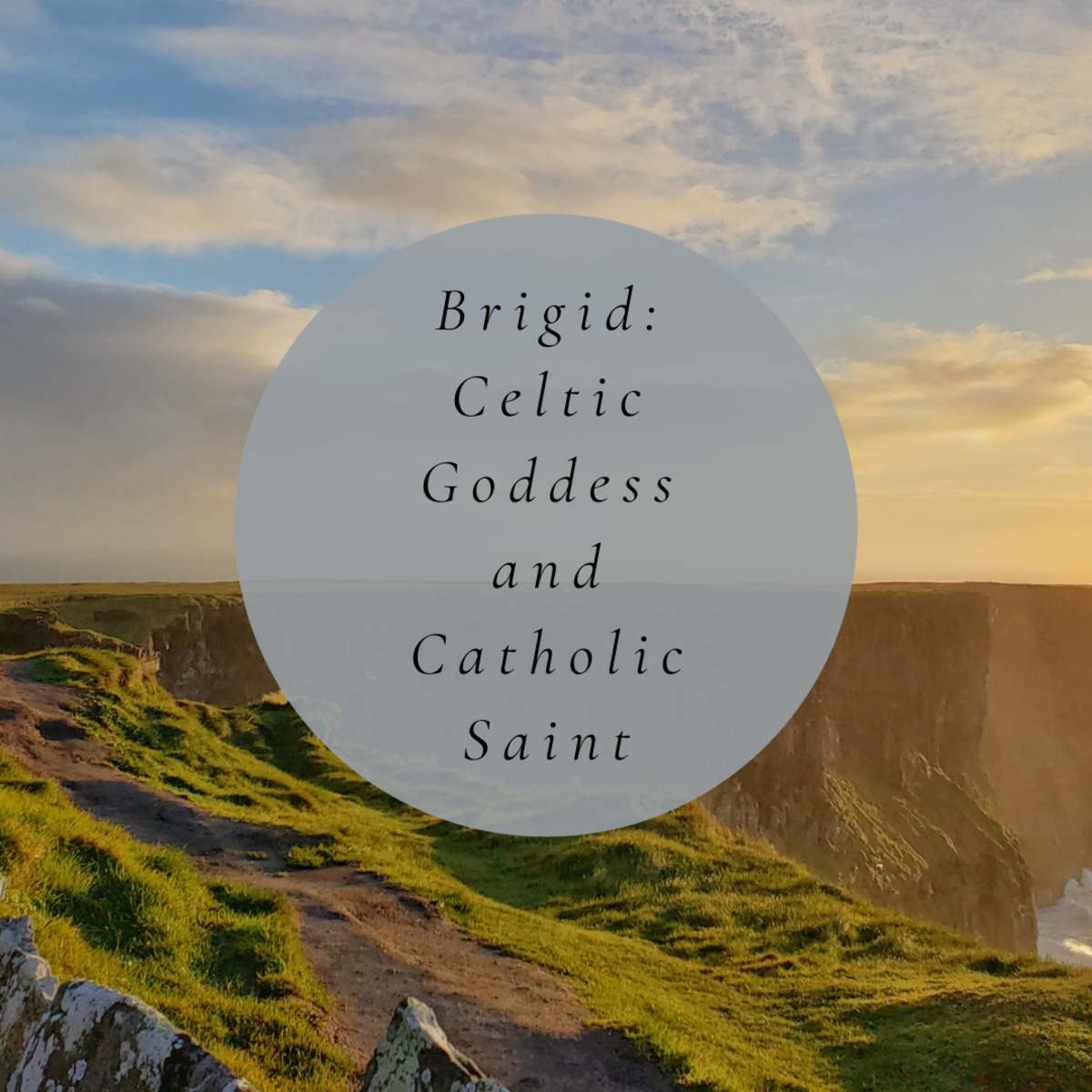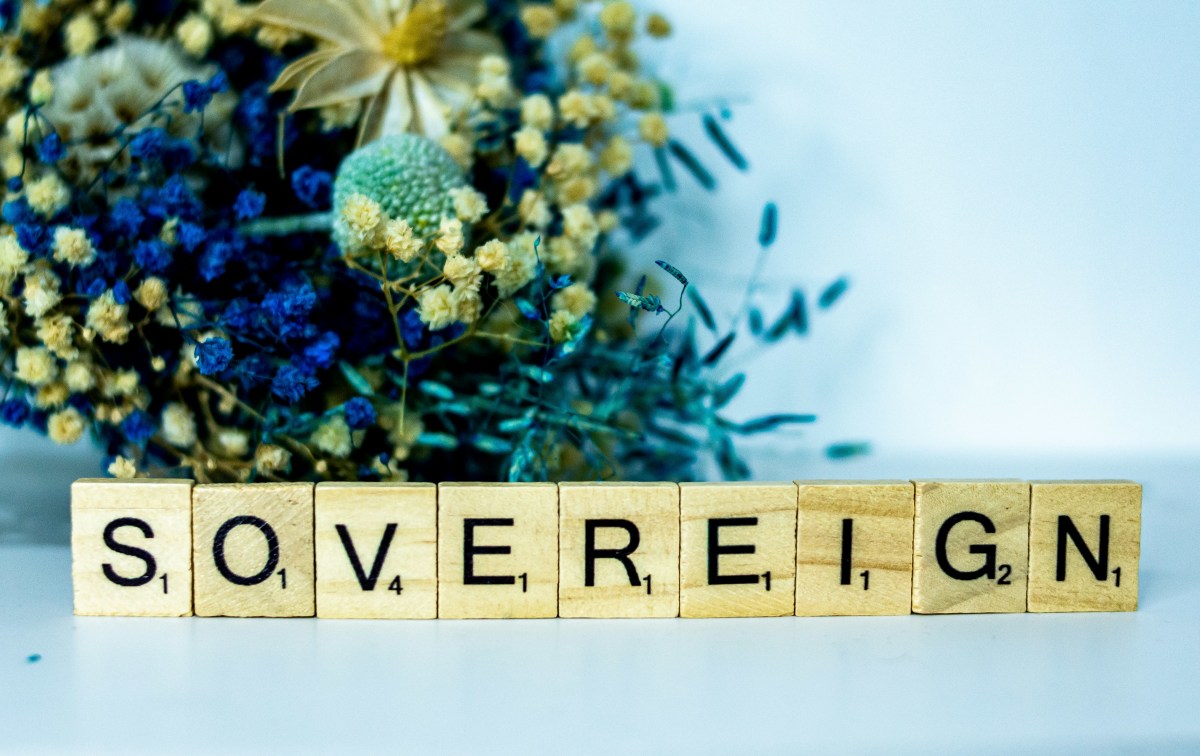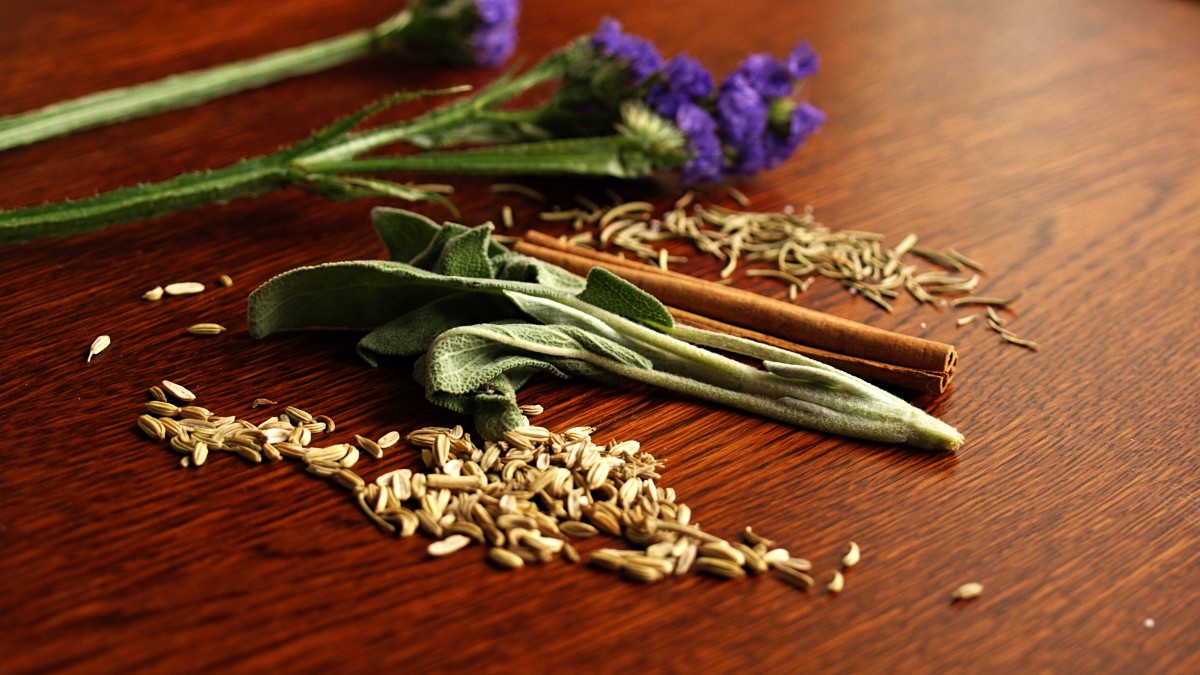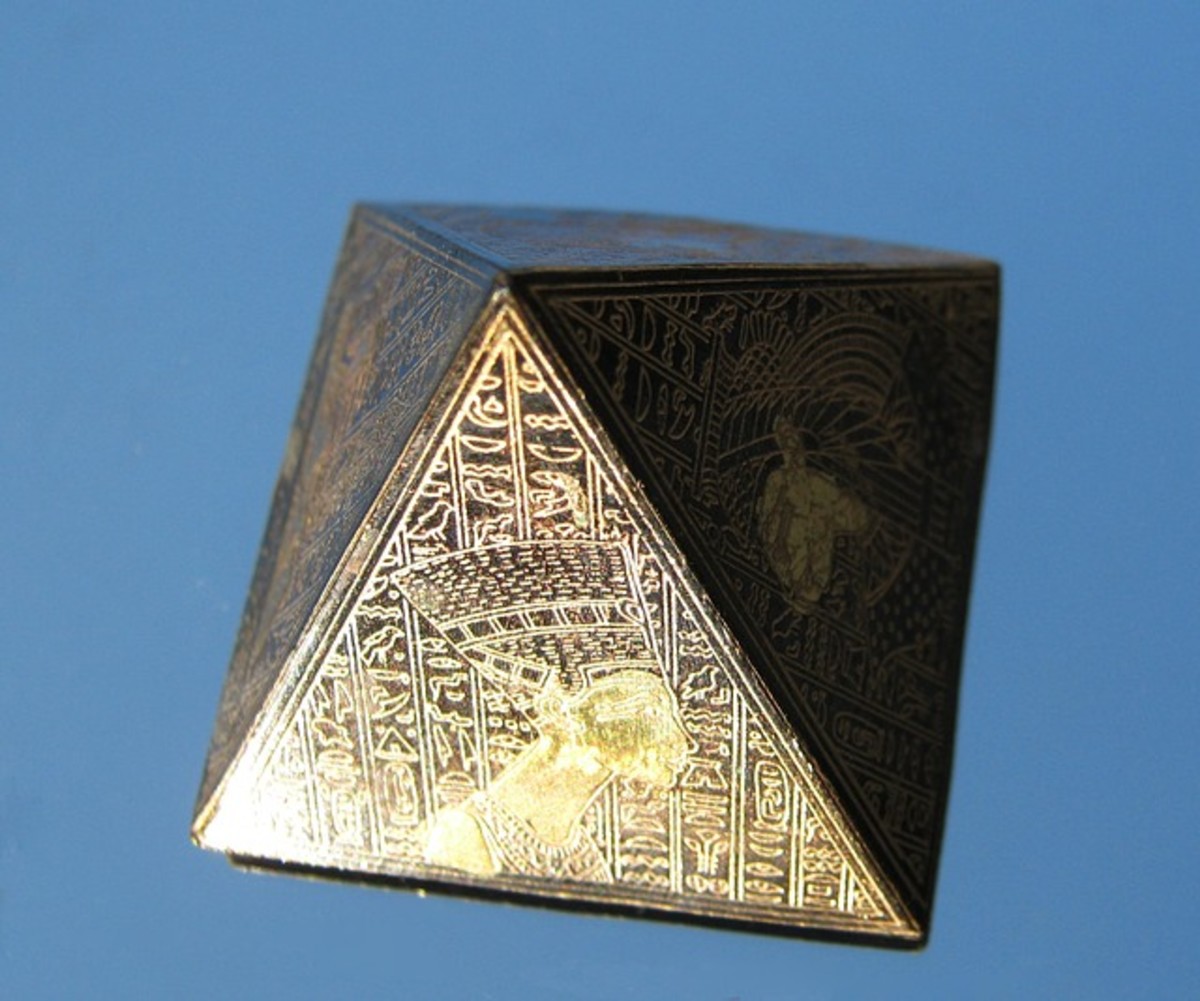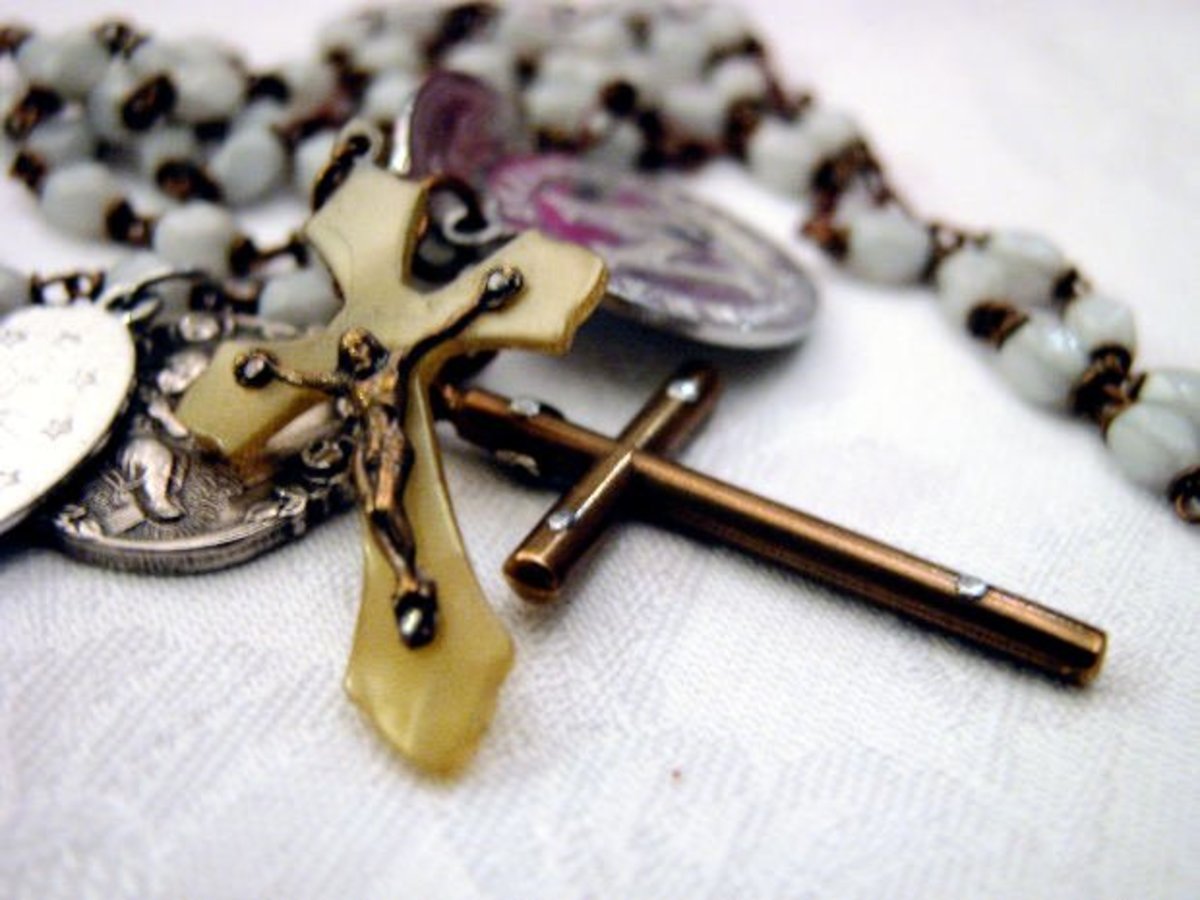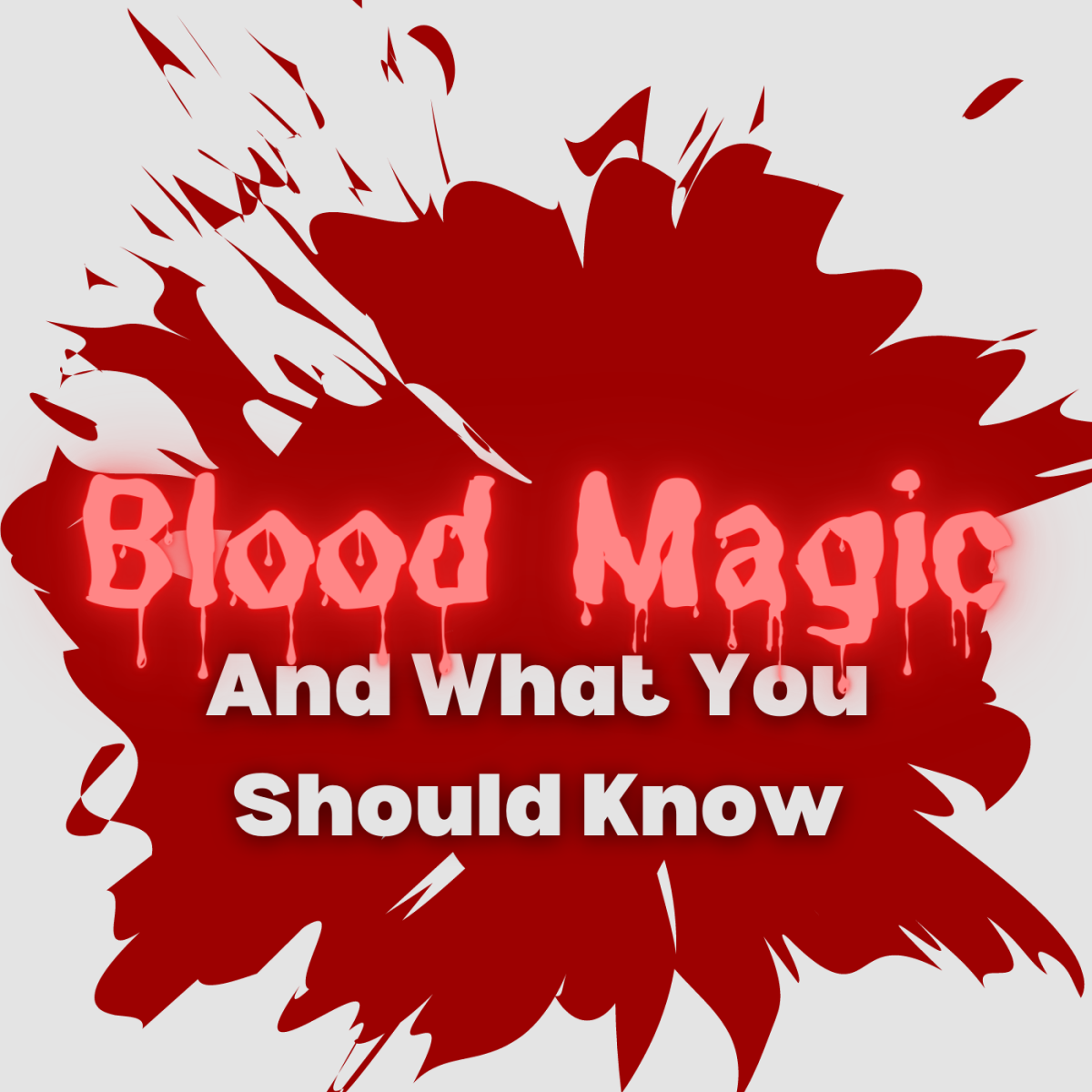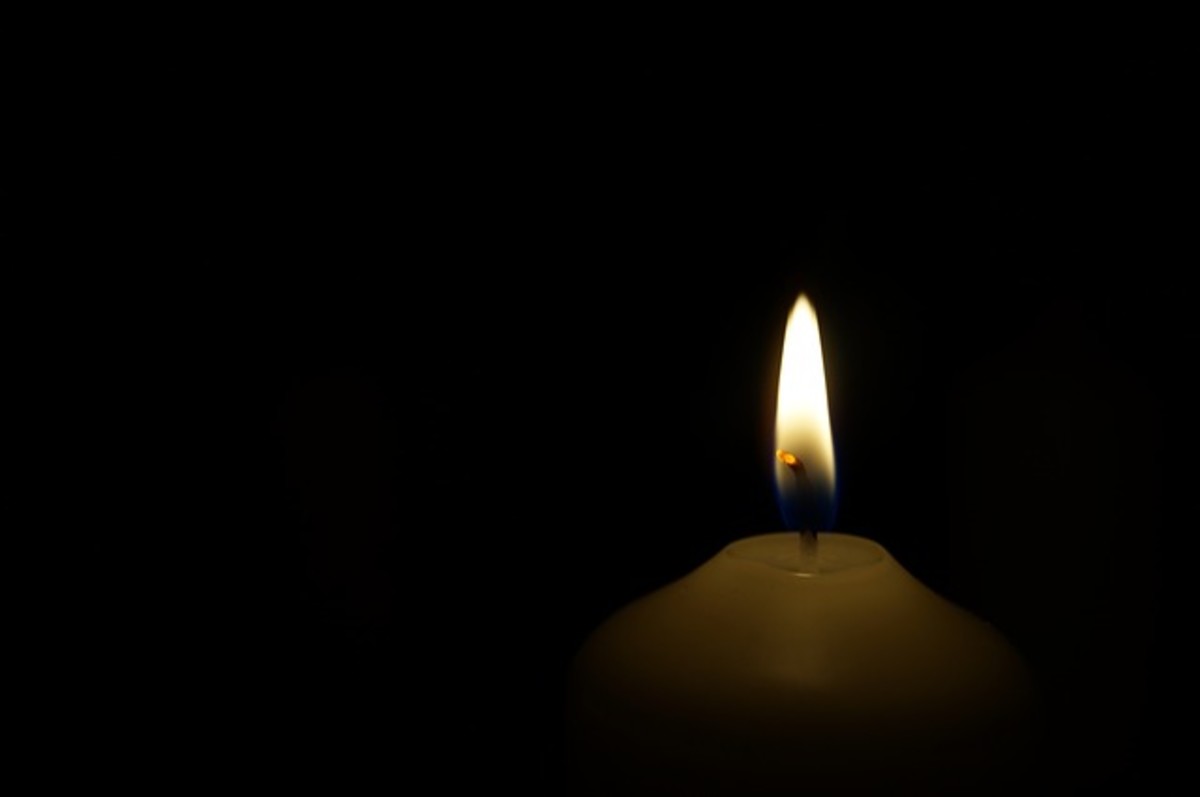Threads of Fate: The Evolution of Nordic Witchcraft from Pagan Roots to Modern Ritual
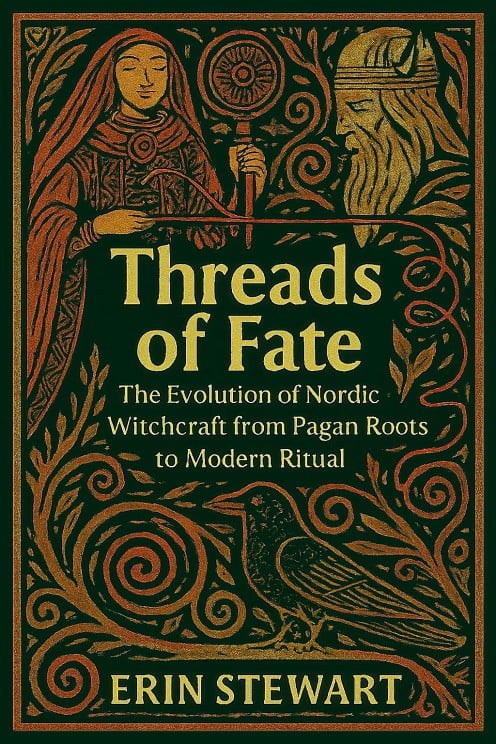
In the Loom of Ice and Fire: The Mythic Reawakening of Nordic Witchcraft
In the wind-scoured reaches of the North, where glaciers whisper and fjords cleave the earth like divine inscriptions, a sacred art once stirred beneath the veil of survival and story. This was Seiðr—a form of Nordic witchcraft not born of whimsy, but of ritual, reverence, and raw communion with the unseen. It emerged from the marrow of myth, practiced by those who dared to spin fate, summon spirits, and walk the liminal path between worlds.
Seiðr was not gentle. It was ecstatic and elemental, woven into the bones of Norse cosmology and guided by gods like Freyja, the mistress of magic, and Odin, the wanderer who sacrificed himself for wisdom. Practitioners—especially the vǫlur and seiðkonur—were revered as oracles and feared as sorcerers, wielding chants, runes, and ritual tools to shape destiny and commune with the dead.
But this spiritual force did not remain untouched. With the arrival of Christianity, Seiðr was cast into shadow—condemned, suppressed, and driven underground. Tribes fractured, temples fell, and the sacred groves of the old gods were replaced by stone churches and moral absolutes. Yet Seiðr did not die. It adapted, surviving in whispers, symbols, and syncretic spells that braided pagan power with Christian mysticism.
Now, in the 21st century, Seiðr rises again—not as a reenactment of brutality, but as a ceremonial bridge between ancestral wisdom and contemporary spiritual artistry. It is practiced in ritual circles, poetic invocations, and solitary rites. It honors the threads of fate, the spirits of land and lineage, and the mythic memory that still pulses beneath modern skin.
This is not nostalgia. It is resonance. A reclamation. A ritual rebirth.
Origins: Seiðr and the Shamanic Soul of the North
In the mythic heart of Norse cosmology, Seiðr (pronounced “say-thur”) was not merely magic—it was the art of bending fate, a sacred and perilous practice that blurred the boundaries between prophecy, sorcery, and spiritual communion. Rooted in the elemental rhythms of pre-Christian Scandinavia, Seiðr was a ritual language spoken by those who dared to touch the threads of destiny.
The Practitioners: Liminal Weavers of Worlds
Seiðr was practiced by both men and women, though it was predominantly a feminine art. Female practitioners were known as vǫlur, seiðkonur, or spákonur—seeresses who traveled between settlements, carrying staffs, chants, and reputations that inspired both reverence and fear. They were liminal figures, standing at the threshold between worlds: part prophet, part sorcerer, part priestess.
Male practitioners, called seiðmenn, existed but were stigmatized. In Norse society, magic was deeply gendered, and men who practiced Seiðr risked being labeled with ergi—a term connoting unmanliness, moral deviance, and social shame. To wield Seiðr as a man was to step outside the rigid codes of Viking masculinity, a transgression that could cost one honor, status, or even life. Yet paradoxically, Odin himself, the All-Father and god of war, wisdom, and poetry, was said to practice Seiðr—taught by Freyja, the Vanir goddess of love, fertility, and magic.
The Rituals: Threads, Trance, and Transformation
Seiðr was a shamanic and ceremonial practice, involving:
-
Divination: Reading the future, interpreting omens, and revealing hidden truths.
-
Spirit Communication: Channeling gods, ancestors, and land spirits through trance and invocation.
-
Fate-Weaving: Influencing the web of destiny spun by the Norns, often through symbolic action and ritual drama.
-
Trance Work: Entering altered states of consciousness via chanting (galdr), drumming, and sometimes hallucinogens.
Ritual tools were deeply symbolic:
-
The distaff, a spindle used in weaving, represented the practitioner’s power to spin fate.
-
Runes, carved into bone, stone, or wood, served as portals to divine knowledge and magical force.
-
Chants and incantations summoned unseen energies, shaping reality through sound and intention.
Imagine the scene: a longhouse bathed in firelight, villagers gathered in hushed awe, and a vǫlva at the center—chanting, swaying, her staff striking the earth in rhythm with the heartbeat of the unseen. Her voice was not entertainment—it was ritual, and it worked not only on the spirit realm but on the psyche of all who witnessed it.
The Stigma and the Sacred
Though Seiðr was deeply spiritual, it was also feared. Its practitioners were seen as uncanny, dangerous, and powerful. The magic they wielded could heal or harm, summon storms or still winds, bless crops or curse enemies. It was practical and mystical, revered and reviled.
The tension between sacred power and social taboo shaped Seiðr’s legacy. It survived persecution, Christian condemnation, and cultural erasure—not through brute force, but through ritual resilience and symbolic adaptation.
Today, Seiðr is reborn in modern ceremonial circles, poetic invocations, and spiritual inquiry. It is no longer a threat to masculinity or a relic of superstition—it is a mythic language, a ritual art, and a bridge between past and present.
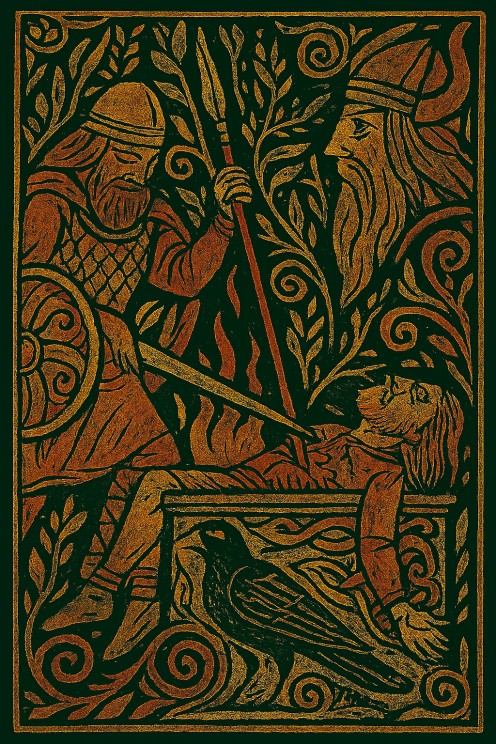
Pagan Brutality and Sacred Power
Long before the arrival of the cross and crown, Norse spirituality pulsed with the raw rhythm of survival. It was not a religion of doctrine—it was a living cosmology, carved into fjords, whispered through wind, and etched in the bones of ritual. The sacred was not distant; it was immanent, elemental, and often perilous.
At the heart of this spiritual current was Blót—a sacrificial rite that bound mortals to gods through offerings of blood, bone, and fire. These ceremonies, held in sacred groves or consecrated halls, were not symbolic gestures. They were transactions of power, where animals—and at times, humans—were offered to deities like Odin, Freyja, and Thor in exchange for fertility, protection, or victory.
Magic, too, was unsanitized. It surged through the practice of Seiðr, a form of Norse sorcery that blurred the line between prophecy and possession. Practitioners entered ecstatic trance, guided by chants and rhythmic movement, to commune with spirits, manipulate fate, and traverse the unseen realms. Blood rites, symbolic death-rebirth cycles, and ritual intoxication were not aberrations—they were gateways to the divine.
The Norse did not view existence as linear. Life was a woven tapestry, a web of fate known as Urðr, spun by the three Norns—Urðr (What Has Been), Verðandi (What Is Becoming), and Skuld (What Shall Be). Seiðr practitioners sought to tug at these threads, not to dominate destiny, but to negotiate with it, to reshape its weave through ritual and sacrifice.
Yet brutality was never the essence—it was the cost of communion. To touch the sacred, one had to bleed. To invoke the gods, one had to offer something holy. In this worldview, pain was not punishment—it was portal.
Today, echoes of this elemental spirituality remain—not in reenactments of violence, but in ritualized reverence, poetic invocation, and ceremonial adaptation. The veil is thinner than ever, and those who walk the mythic path do so with the same awe, the same hunger, and the same devotion to forces that still whisper through the wind.
Modern Revival: From Shadows to Ceremony
In the shadowed fjords and frost-laced forests of ancient Scandinavia, Nordic witchcraft—known as Seiðr—was once the heartbeat of tribal mysticism. It was a practice of fate-weaving, spirit-walking, and elemental communion. But with the arrival of Christianity, this sacred art was cast into conflict. What followed was not just religious conversion—it was a cultural rupture, a spiritual reckoning that reshaped the very soul of Nordic magic.
Pagan Roots and Tribal Rifts
-
Seiðr, practiced by vǫlur (seeresses) and seiðmenn, was deeply entwined with Norse cosmology. It involved trance, prophecy, and the manipulation of fate through ritual.
-
Magic was not metaphor—it was embodied power, often brutal, ecstatic, and tied to blood rites and sacrifice.
-
The Norse gods—Odin, Freyja, Thor—were invoked through offerings, chants, and sacred symbols like the runes and distaff.
But as Christianity spread across Scandinavia between the 8th and 12th centuries, it branded these practices as heretical. Missionaries condemned Seiðr as devilry, and tribal communities were torn between ancestral loyalty and the pressure to convert.
-
Rifts emerged: Some chieftains embraced Christianity for political gain, while others clung to the old ways, leading to civil unrest and spiritual fragmentation.
-
Sacred groves were razed, temples dismantled, and practitioners persecuted. Yet many continued their rites in secret, preserving the magic through oral tradition and hidden symbols.
Christian Influence and Syncretic Survival
Despite its initial rejection, Christianity did not erase Nordic witchcraft—it transformed it:
-
Myths were reinterpreted: Odin became a shadowed echo of Christ-like wisdom; Freyja’s fertility was recast through Marian symbolism.
-
Symbols merged: The Mjölnir (Thor’s hammer) was worn alongside the Christian cross, reflecting a dual allegiance.
-
Grimoires and folk magic absorbed Christian mysticism, including angelic invocations and biblical psalms woven into spellcraft.
-
The Vegvísir, a magical Icelandic stave, emerged from Christian-influenced texts, blending Norse symbolism with protective Christian motifs.
This fusion birthed a hybrid spirituality—one that retained the emotional resonance of Norse ritual while adapting to the moral frameworks of Christianity.
Modern Rebirth: Ritual Over Reenactment
In the 20th and 21st centuries, Nordic witchcraft has reawakened—not as a reenactment of ancient brutality, but as a ritualized, ethical, and emotionally attuned practice. It honors both the ancestral and the adaptive, weaving threads of myth, mysticism, and modern metaphysical inquiry.
Neo-Seiðr
Modern practitioners enter trance states through chanting, breathwork, and guided meditation, accessing ancestral wisdom and spiritual realms. The practice is deeply personal, often framed as soul journeying rather than fate manipulation.
Runic Magic
Runes are now tools of divination, empowerment, and intention-setting. They appear on candles, stones, ceremonial cards, and even tattoos—each symbol a portal to mythic resonance.
Seasonal Rituals
Sabbats like Yule, Ostara, and Midsummer are celebrated with nature-based rites, feasts, and offerings. These festivals blend Norse cosmology with modern earth-based spirituality, often echoing Christian liturgical rhythms in their seasonal structure.
Ancestor Veneration
Instead of invoking gods through sacrifice, modern witches honor Disir (female ancestors) and Landvaettir (land spirits) through altars, poetry, and ritual offerings. This practice reflects both Norse reverence and Christian-style memorialization.
Ceremonial Adaptation
Nordic witchcraft today thrives in ritual circles, online communities, and solitary rites. It blends Norse myth with holistic wellness, psychological healing, and spiritual innovation—a far cry from its once brutal reputation.
A Living Tapestry
Nordic witchcraft is no longer a relic of pagan violence nor a casualty of Christian conquest. It is a living tapestry, woven from threads of myth, resistance, adaptation, and ritual. It speaks to those who seek depth, symbolism, and emotional resonance in their spiritual practice.
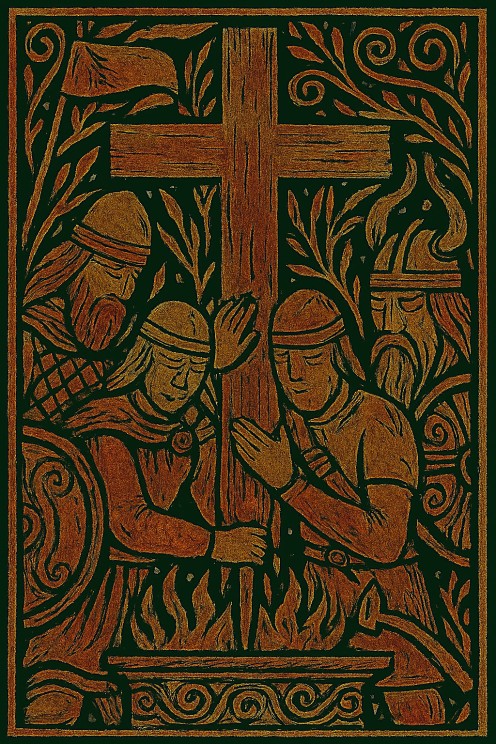
Spells and Practices in the Modern Tradition
Spell Type
| Description
| Modern Adaptation
|
|---|---|---|
Fate-Weaving
| Influencing destiny through symbolic action
| Thread rituals, intention-setting altars
|
Spirit Invocation
| Calling upon ancestors or deities for guidance
| Guided trance, candle offerings
|
Protection Magic
| Warding off harm using runes and charms
| Bindrunes on jewelry, herbal sachets
|
Divination
| Reading signs from the unseen realms
| Rune casting, dreamwork, ceremonial cards
|
Elemental Rituals
| Honoring nature spirits and seasonal shifts
| Outdoor ceremonies, seasonal feasts
|
Here are a few adapted practices that echo ancient Seiðr while honoring modern ethics
From Brutality to Beauty: A Mythic Reclamation
Nordic witchcraft has not faded—it has transmuted. What once echoed through blood-soaked groves and trance-lit halls as feared sorcery now resounds as mythic artistry, a sacred craft that binds past to present with ritual precision and emotional resonance. Its edge remains—not as violence, but as clarity, as the sharpened intuition of those who dare to weave meaning into the marrow of modern life.
This is not a return. It is a reclamation.
Today’s practitioners are not reenactors of brutality, but architects of ritual, keepers of ancestral flame, and curators of spiritual depth. They gather not to dominate fate, but to dialogue with it—through runes, chants, seasonal rites, and ceremonial offerings that honor both the land and the lineage of their strong ancestry.
Sources
-
Blain, J. (2002). Nine worlds of Seid-Magic: Ecstasy and neo-shamanism in North European paganism. Routledge.
-
Davidson, H. R. E. (1990). Gods and myths of Northern Europe. Penguin Books.
-
Price, N. (2002). The Viking way: Religion and war in Late Iron Age Scandinavia. Uppsala University.
-
Strmiska, M. (Ed.). (2005). Modern paganism in world cultures: Comparative perspectives. ABC-CLIO.
-
Paxson, D. (2006). Trance-portation: Learning to navigate the inner world. Weiser Books.
-
Lindow, J. (2001). Norse mythology: A guide to gods, heroes, rituals, and beliefs. Oxford University Press.
-
Flowers, S. E. (1984). The Galdrabók: An Icelandic grimoire. Weiser Books.
-
Simek, R. (2007). Dictionary of Northern mythology (A. Hall, Trans.). D.S. Brewer.
-
Asprem, J. (2012). The problem of disenchantment: Scientific naturalism and esoteric discourse, 1900–1939. Brill.
This content is accurate and true to the best of the author’s knowledge and is not meant to substitute for formal and individualized advice from a qualified professional.
© 2025 Erin K Stewart

